Educating Bartenders Worldwide.
By Beverage Trade Network
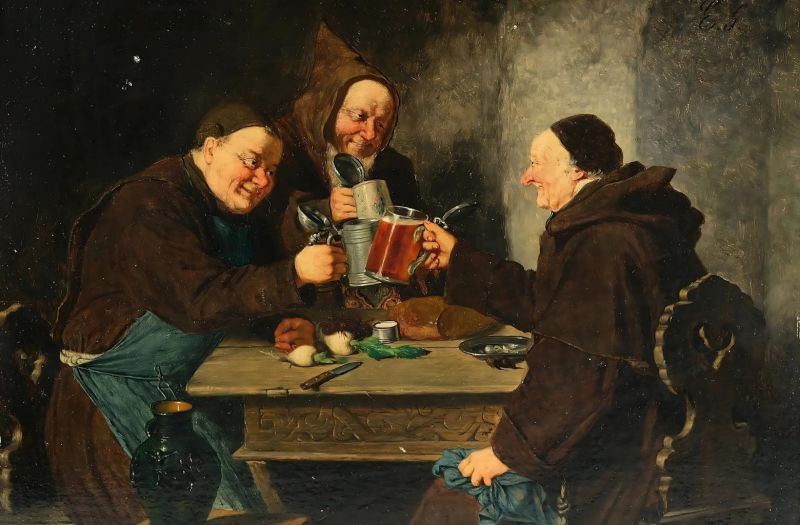
Throughout history, the development of alcohol has been influenced by many unexpected sources. Among the most impactful yet underappreciated contributors are the medieval European monks. In Europe’s monasteries, alcohol wasn’t just a byproduct of farming; it was an essential craft. Monks brewed beer not only to nourish themselves during fasting but also to support their communities. They developed distillation techniques that turned herbs into elixirs, not just to ease ailments, but to preserve knowledge. Centuries before the craft cocktail boom, monks were already practicing what today’s bartenders preach: balance, experimentation, purity of ingredients, and reverence for process. What was once done for devotion and survival is now being reinterpreted behind the bar with modern tools and fresh intent. From herbal liqueurs to fermentation rituals, today’s cocktail scene owes a deep debt to the cloistered innovators of old. In this piece, we’ll trace how monasteries shaped the world of alcohol and how their legacy is quietly transforming modern bartending.
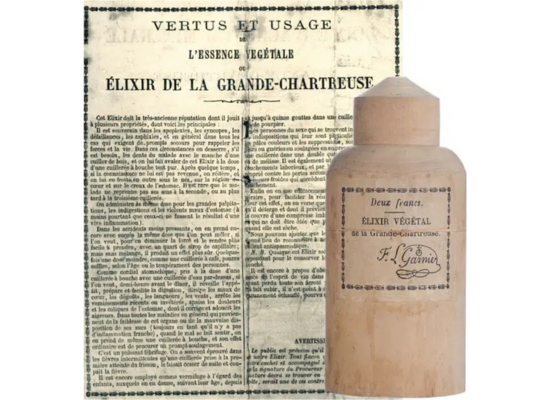
Source: Chartreuse
Long before “craft” was a buzzword, monks were crafting. Medieval monasteries became hubs of agricultural innovation. Growing hops, barley, herbs, and grapes were part of their self-sufficiency, and alcohol was one of the most valuable byproducts. Beer was a staple. Trappist monks, especially in Belgium, mastered brewing not only for nourishment but also as a source of income. They created beers that were high in calories and rich in flavor, ideal for fasting periods and monastery rules that forbade meat.
Monks also played a crucial role in the development of distilled spirits. Chartreuse, a complex green herbal liqueur, was invented by Carthusian monks from a secret recipe in 1605. Benedictine, made with 27 herbs and spices, was created in 1510 by monks in Fécamp, France. These spirits weren’t just for pleasure; they were medicinal, restorative, and considered part of spiritual care. In an age when water could kill you and medicine was unreliable, monks used booze as an elixir and economy.
Monastic alcohol wasn’t the result of luck; it was the result of discipline. Monks lived by the Rule of St. Benedict, which emphasized order, repetition, and humility. This mindset naturally lent itself to fermentation and distillation, processes that demand exact timing and attention to detail. Every recipe was written down, adjusted, and refined. Over the generations, these notes became blueprints for flavor consistency and stability, centuries before commercial breweries adopted quality control. The monks didn’t chase trends. They chased balance. Their deep understanding of herbs, roots, and spices also gave them a distinct advantage. Monasteries often doubled as infirmaries, and monks as apothecaries. They knew what grew nearby, how it reacted to alcohol, and how to extract it through maceration or distillation. In short, monks weren’t just making booze, they were designing it with the intent to heal, nourish, and last.
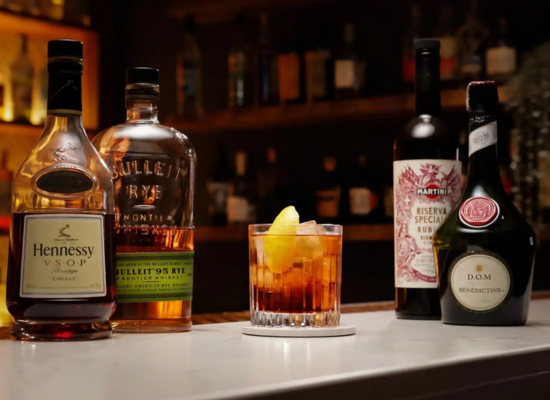
Vieux Carré. Source: Drinks World
Monastic beverages are gaining renewed relevance across the broader alcoholic beverage landscape. Chartreuse and Benedictine, for example, have returned to prominence in both classic cocktails like the Last Word and Vieux Carré, and in more experimental bar programs that lean into herbal and historical profiles. But the revival extends beyond the cocktail shaker. Trappist beers, particularly from breweries like Chimay and Orval, remain benchmarks for quality and craft, with their yeasty complexity and spiritual pedigree setting them apart in a crowded beer market. Even monastic wines, such as those produced by Cistercian monasteries in Austria and France, are being celebrated for their minimalist approach and connection to the land. As interest in authenticity, storytelling, and traditional methods grows, more producers are reviving forgotten abbey recipes or launching spirit lines inspired by monastic herb lore. For today’s discerning drinkers, these offerings represent more than novelty; they are a return to booze with purpose and provenance.
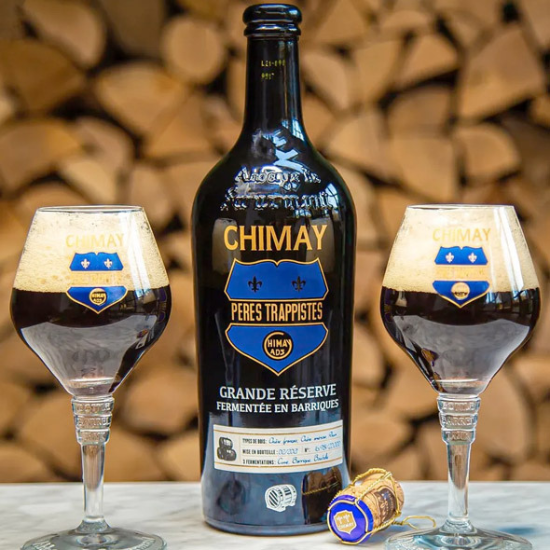
Source: Chimay
The monastery’s influence shows up in more than just what’s in the bottle. It’s shaping how bartenders think and work.
Ingredient-Driven Cocktails: Like monks, bartenders are obsessed with ingredient sourcing. They’re turning to local herbs, wild-foraged roots, and seasonal produce, often mimicking monastery gardens.
Maceration and Infusions: Monks steeped herbs in alcohol to extract flavor and medicine. Bartenders now use the same methods to create house-made bitters, tinctures, and infusions.
Botanical Focus: The herbal makeup of Chartreuse and Benedictine has inspired a new wave of botanical spirits and low-ABV cocktails. Bartenders are creating “healthier” drinks with adaptogens and nootropics, echoing the monks’ medicinal intent.
Ritual and Storytelling: There’s a certain drama in serving something made from a centuries-old recipe. Monastic spirits add depth to the bar experience, ritual, reverence, and history in a glass.
As the saying goes, “You’re not just serving a drink. You’re serving a legacy.”
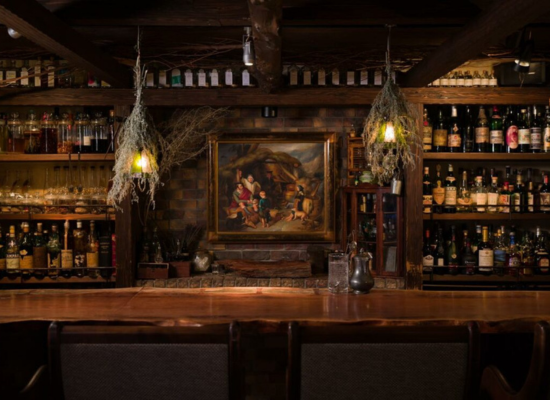
Bar Benfiddich; Source: Nomunication
Some bars are taking the inspiration even further by designing spaces and menus that feel downright monastic. Think candlelight, stone walls, and minimalist aesthetics. Menus are full of obscure Amari, monk-made liqueurs, and drinks named after saints and vices. This isn’t cosplay, it’s branding that taps into the quiet confidence and spiritual richness of monastic life. Examples include Bar Benfiddich in Tokyo, which fuses apothecary-style mixology with a reverence for ancient herbal techniques, and Burp Castle, a New York City bar known for its monastery-style decor and strict low-volume policy, which draws directly from monastic customs to shape its ambiance and guest experience.
On the brand side, companies like Seedlip (botanical non-alcoholic spirits) and small-batch producers such as St. Raphael and Abadia Da Cova, which crafts herbal eaux-de-vie inspired by French abbey lore, embrace the monastery model: natural, slow-made, and rooted in place. Klosterbrauerei Andechs in Germany and La Trappe in the Netherlands continue to operate as active monastic breweries, producing acclaimed beers steeped in centuries-old tradition.
In today’s fast-moving, tech-driven world, the quiet return of monastic values in the drinks industry offers something grounded and enduring. Patience, purity, and intention are no longer seen only as religious virtues but as essential principles for meaningful craft. Bartenders and makers alike are embracing a slower, more thoughtful approach to alcohol, one that values ingredients, process, and purpose. From the time-honored brewing methods of Trappist ales to the botanical complexity of Cistercian wines, monastic traditions continue to influence what we drink and how we experience it. Modern bars and brands are not just reviving historic recipes; they are channeling centuries of silent devotion and sensory discipline. In every carefully balanced pour or herb-infused blend, there is more than flavor; there is story, ritual, and craftsmanship. This shift is not a nostalgic escape into the past, but a forward-looking embrace of authenticity. The legacy of monastic brewing and distillation remains a compass for creators seeking depth and direction in a saturated marketplace. Every glass inspired by this lineage invites us to pause, appreciate, and remember that good booze, like wisdom, takes time.
Header image source: Mutual Art
Also Read:
Future-Proof Your Bar: Embracing the Latest Trends in Design and Sustainability
Crafting the Perfect Cocktail: 15 Must-Have Modifiers for Bartenders
Bartender Hacks You Need to Know